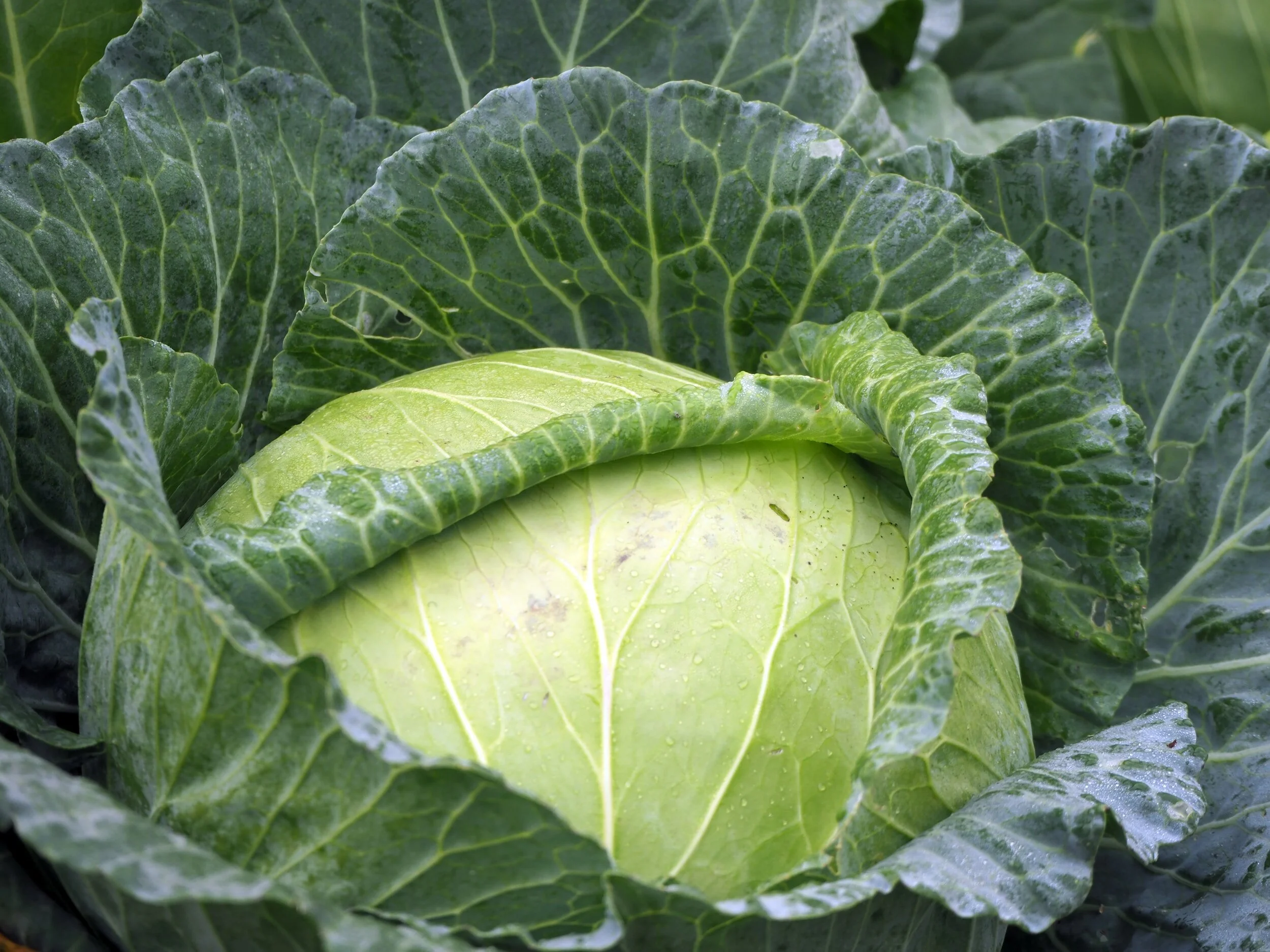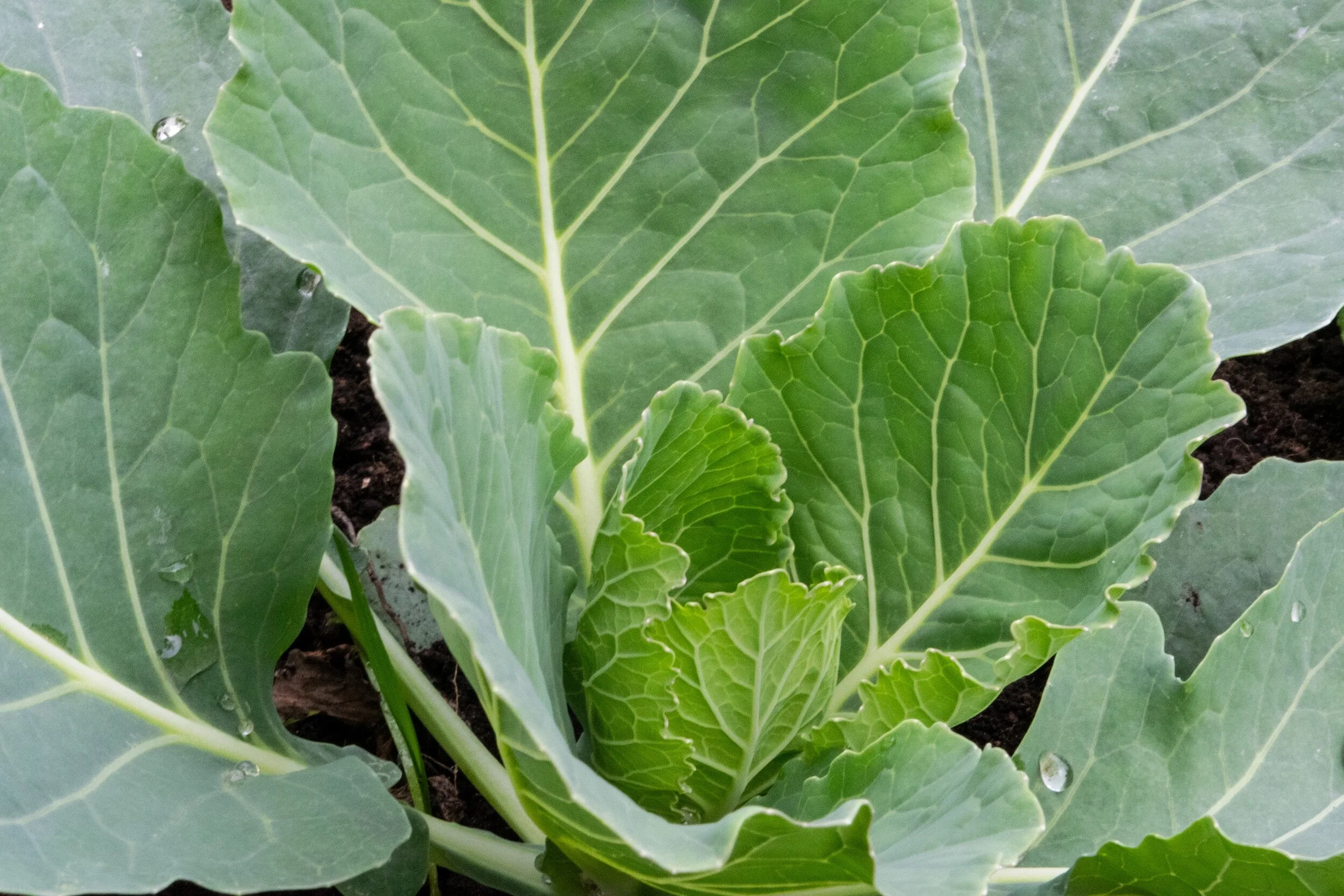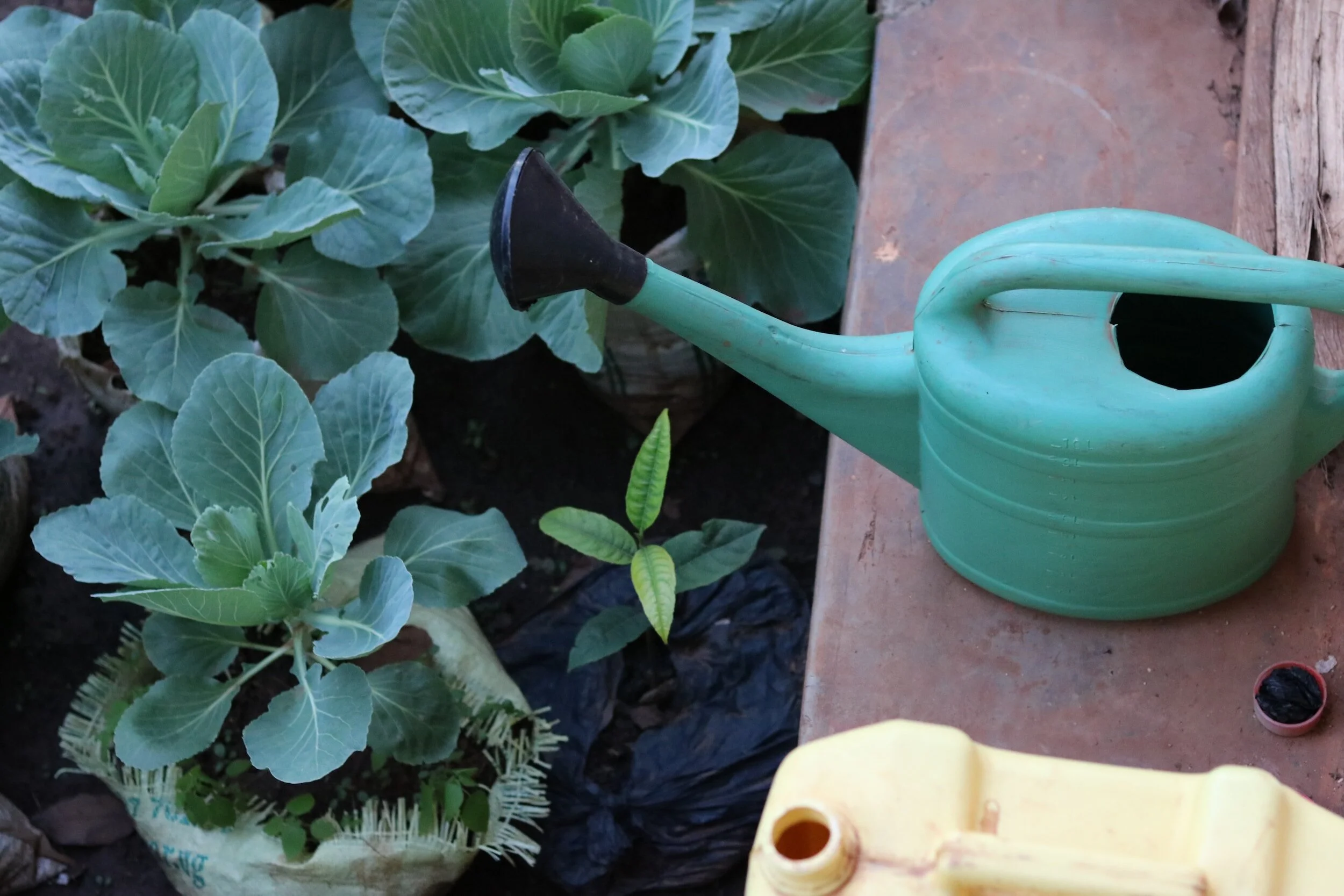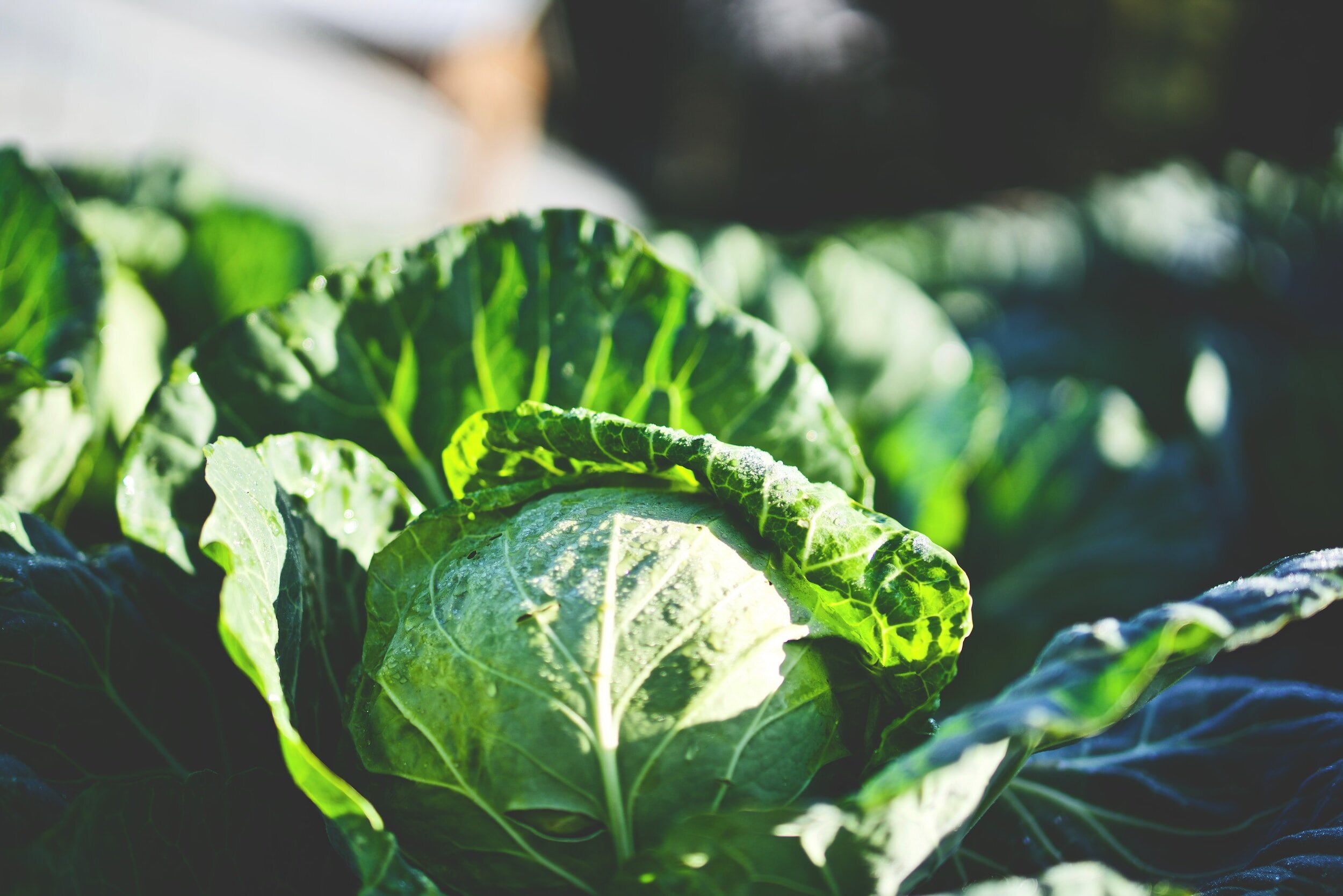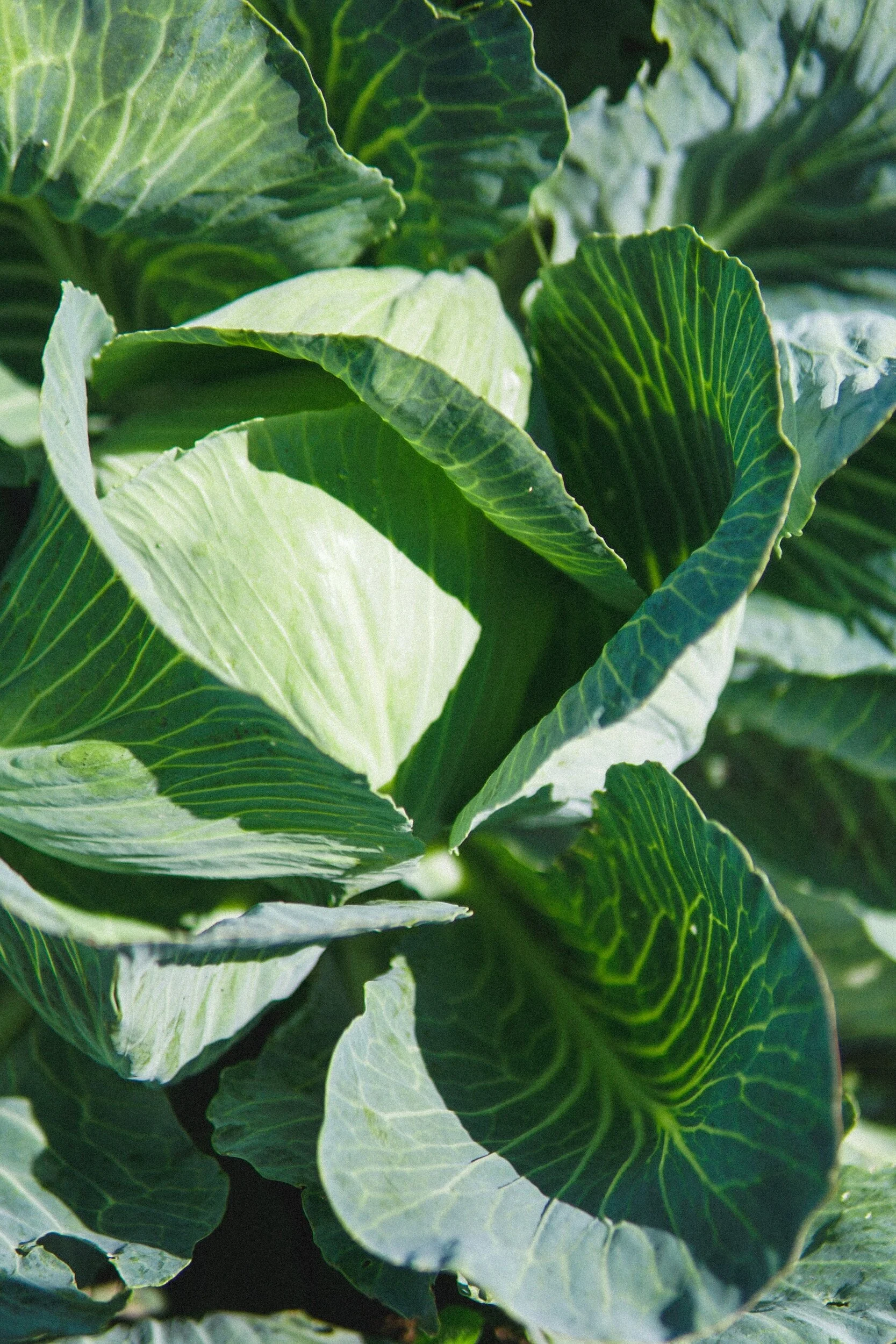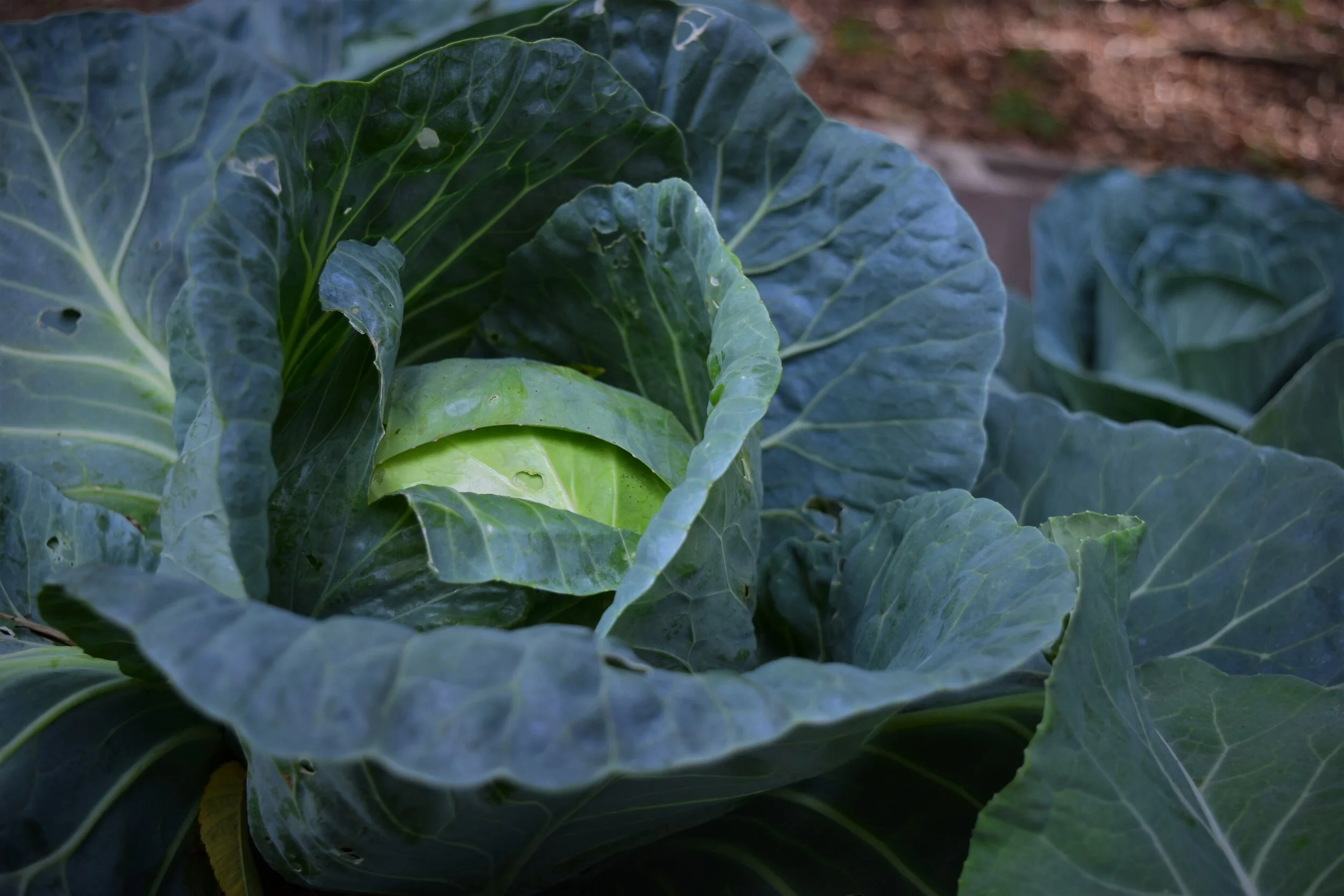Growing Cabbages in Containers
This article has links to products that I may make commission from.
The art of growing vegetables has evolved tremendously over the years, and among the vegetables that have seen a surge in urban cultivation is cabbage.
Growing cabbage has long been a staple in gardens around the world, but with space becoming a premium many gardeners are discovering the advantages of growing cabbages in containers.
Container planting not only offers flexibility in terms of space but also presents the opportunity to cultivate a garden even in the absence of a traditional plot.
For those new to the endeavor, the sight of a perfectly grown cabbage nestled within a pot or container is immensely gratifying.
This post aims to equip you with essential tips and information on how to grow cabbage in a container, ensuring that whether you have a sprawling garden or just a balcony, you can savor the joys and flavors of homegrown produce.
To learn more about growing vegetables in containers, check out my guides:
Why Grow Cabbage in Containers?
Growing cabbages in traditional gardens is a tried-and-true method, but there are compelling reasons to opt for container gardening when it comes to this leafy vegetable.
Here’s a deeper look:
Space-Saving Solutions:
Urban Living:
For city dwellers with limited or no garden space, containers offer an efficient way to cultivate cabbages.
Balconies, patios, or even indoor settings can become mini-gardens.
Optimization:
Containers allow for strategic placement.
You can move the pots around to make the best use of available space or sunlight.
Control Over the Growing Environment:
Soil Quality:
One of the major advantages of container gardening is the ability to control the soil quality.
With cabbages, ensuring the right pH level and nutrient mix can significantly impact the yield.
Using a tailored potting soil mix ensures your cabbage plants get the best start.
Check out my guide to The Best Compost for Vegetable Gardens.
Pest Management:
It's often easier to manage pests in containers than in ground gardens.
For instance, cabbage root fly, a common pest, is less likely to infest container-grown cabbages.
Water Regulation:
Overwatering can be a concern for cabbages.
Containers, especially those with proper drainage holes, can help in regulating the amount of water the plant receives, preventing root rot.
For more watering tips, check out my guide How to Use Watering Globes.
Versatility and Experimentation:
Year-Round Cultivation:
Growing cabbages in containers indoors means you aren’t strictly bound by seasons.
With the right care, you can cultivate cabbages throughout the year.
Variety:
Want to grow multiple varieties of cabbage without cross-contamination? Containers are the answer.
It allows for experimentation with different cabbage types without the risk of them affecting each other.
Accessibility and Ease:
Physical Benefits:
For those who have difficulty bending or kneeling, raising containers to a comfortable height can make gardening much more accessible.
Convenience:
Need to protect your cabbages from sudden frost? It's easier to move a container to a sheltered location than to cover an entire garden.
Choosing the Right Container
Selecting the right container is crucial for the successful growth of cabbages.
Here’s a comprehensive guide to ensure your cabbages have the best environment to thrive:
Container Size Matters:
Why Size is Important:
Cabbages have expansive root systems that require ample space to grow.
A cramped container can stunt the plant's growth and reduce the size and quality of the cabbage head.
Recommended Size:
Ideally, a container that holds at least 5 gallons is suitable.
Remember, the larger the cabbage variety, the bigger the container should be.
Depth:
Ensure the container is at least 12 inches deep to accommodate the growing roots, allowing them to spread and absorb nutrients efficiently.
Here is the container I recommend for growing cabbages:
Material Considerations:
Plastic:
Lightweight and retains moisture well, but can degrade over time in direct sunlight.
Terracotta/Clay:
Porous and offers good breathability for roots but tends to dry out faster.
Wood:
Provides a natural aesthetic and good insulation but can decay over time.
Ceramic:
Heavy and retains moisture, making it suitable for areas with hot climates.
Metal:
Can heat up quickly in direct sunlight, which might harm the roots, but is durable.
Drainage is Essential:
Why Drainage Matters:
Proper drainage ensures that excess water can escape, preventing waterlogged soil, which can lead to root rot — a common problem in container gardening.
Hole Size:
The drainage holes shouldn't be too small; otherwise, they might get blocked easily. About half an inch in diameter is usually sufficient.
Elevate Your Containers:
Using pot feet or placing containers on bricks can help improve drainage.
Shape of the Container:
Traditional Pots:
These are versatile and can fit anywhere. However, ensure they’re wide enough to accommodate the cabbage's growth.
Rectangular Planters:
Suitable for growing multiple cabbage plants side by side, respecting the spacing requirements.
These are essentially large containers and can be a good choice if you're looking to grow multiple cabbages or companion plants.
Color and Heat Absorption:
Dark vs. Light:
Dark containers absorb more heat, which might not be ideal in extremely hot climates as it can cause the soil to dry out quickly or even harm the roots.
Light-colored containers reflect sunlight, keeping the soil cooler.
Accessibility:
Lipped Edges:
Containers with lipped edges can be easier to move.
Handles:
Some modern containers come with handles, making them easier to lift, especially when relocating to shelter them from unexpected weather conditions.
Getting Started: From Seed to Planting
Starting your cabbage journey from seeds can be incredibly rewarding.
It offers a first-hand experience of watching your cabbage grow from a tiny seed to a lush, full plant.
Here is a step-by-step guide to the process:
Seed Selection:
Here are my top 3 recommend seed picks for growing cabbage in containers:
Preparing Your Seeds:
Soaking:
Soaking seeds for a few hours before planting can expedite the germination process.
This step softens the seed coat, making it easier for the embryo to sprout.
Spacing:
When sowing, make sure to provide enough space between seeds to prevent overcrowding.
If you're planting multiple seeds in one container, space them at least 3-4 inches apart.
The Right Soil:
Potting Soil Mix:
Cabbages prefer a well-draining potting mix.
A good-quality potting mix, rich in organic matter, ensures that the plant receives all the necessary nutrients.
Adding compost can enhance soil fertility.
Here is my recommended organic potting mix:
pH Levels:
Cabbages thrive in slightly acidic to neutral soil with a pH of 6.5 to 7.5.
Regularly testing and amending the soil can help maintain this range.
Here is the Soil pH test kit I recommend:
Planting Depth:
Seed Depth:
Plant the seeds about 1/4 to 1/2 inch deep in the soil.
This depth is shallow enough for the young seedlings to break through but deep enough to remain moist.
Covering:
Gently cover the seeds with soil and pat down lightly to ensure they are snug.
Germination Environment:
Moisture:
Keep the soil consistently moist but not waterlogged.
Using a spray bottle can be a gentle way to water without displacing the seeds.
For more watering tips, check out my guide How Often to Water Seedlings.
Light:
While seeds don't necessarily need light to germinate, once they sprout, ensure they receive ample sunlight.
Initially, a warm, dark environment can promote germination.
Temperature:
Cabbage seeds germinate best at temperatures between 45°F to 85°F.
Transplanting Seedlings (If you start in smaller containers):
When to Transplant:
Once the seedlings have at least two sets of true leaves and are 3-4 inches tall, they're ready to be transplanted to their final container.
How to Transplant:
Gently remove the seedling, ensuring you don't damage the roots.
Make a hole in the center of the final container filled with potting mix and place the seedling in.
Cover the roots with soil and water immediately.
Caring for Your Cabbage Plant
Your cabbage plants, once established, will need consistent care and attention to ensure they grow to their full potential.
Here are the steps and measures you should take:
Watering:
Consistency is Key:
Cabbages require regular watering to keep the soil evenly moist.
A consistent water supply ensures the cabbage heads form properly and prevents splitting.
For watering, you can use rainwater collected from a water butt.
Avoid Overwatering:
While the soil should be kept moist, it's essential to prevent waterlogging.
Excessive moisture can lead to root rot and other fungal diseases.
Watering Technique:
It's best to water at the soil level using a watering can or hose attachment to prevent water from sitting on the leaves, which can promote diseases.
Sunlight:
Shade in High Heat:
In extremely hot conditions, cabbages might benefit from partial shade during the hottest part of the day to prevent bolting (premature flowering).
Light Requirement:
Cabbage plants thrive in full sun, meaning they need at least 6 hours of direct sunlight per day.
If growing indoors or in shaded areas, consider using grow lights.
Here are the indoor grow lights I recommend:
Fertility:
Cabbages are heavy feeders.
Consider applying a balanced, slow-release fertilizer or compost tea every few weeks to replenish nutrients.
Check out my guide: A Simple Recipe for Rich Compost Tea.
Here is the slow-release fertilizer I recommend for cabbage:
Protecting Against Pests and Diseases:
Common Pests:
Cabbages are susceptible to pests like cabbage loopers, aphids, and root maggots.
Regularly inspect your plants and use organic insecticidal soaps or neem oil as preventative measures.
Diseases:
Black rot, clubroot, and fungal leaf spots can affect cabbages.
Ensure good air circulation, avoid overhead watering, and rotate crops (if you grow other plants) to prevent these issues.
Spacing and Thinning:
Avoid Overcrowding:
If you planted multiple seeds in one container, you might need to thin out the seedlings.
Proper spacing ensures adequate air circulation and reduces competition for nutrients.
How to Thin:
Gently pull out the smaller, less vigorous seedlings, leaving the strongest ones to grow to maturity.
Monitoring Growth:
Leaf Inspection:
Healthy cabbage plants should have vibrant, green leaves.
Yellowing could indicate a nutrient deficiency or watering issues.
Head Formation:
Feel the top center of the plant to monitor the formation of the cabbage head.
It should gradually become firm as it matures.
Cabbage Harvesting
The moment of truth has arrived! After dedicating time and care to your cabbage plants, it's time to reap the rewards.
Here's what you need to know about harvesting cabbage:
Identifying Maturity:
Timeframe:
Cabbages typically take between 50-90 days to mature after transplanting.
Feel the Head:
A mature cabbage head will feel firm to the touch.
Gently squeeze the head; if it's hard and dense, it's likely ready to harvest.
Size:
While the exact size can vary by variety, a cabbage head that's filled out and well-shaped is a good indicator of maturity.
Harvesting Technique:
Tools:
Use a sharp knife or garden shears to ensure a clean cut.
Here are my favorite garden shears for the job:
Cutting:
Slice the cabbage head off at its base, leaving a few lower leaves attached to the stem.
This technique can sometimes encourage the growth of smaller secondary heads.
Best Time to Harvest:
Morning Harvest:
It's best to harvest cabbages in the cool hours of the early morning.
At this time, they contain the most moisture and will be crisper.
Weather Consideration:
If rain is forecasted, consider harvesting beforehand, as excess moisture can sometimes cause mature heads to split.
Post-Harvest Handling:
Cleaning:
Gently brush off any soil or debris from the cabbage head.
Rinse it under cool water if necessary.
Storing:
If you're not using the cabbage immediately, store it in a cool, dry place or the refrigerator.
Kept in proper conditions, cabbages can last several weeks.
Leaving the Roots:
In some cases, if you leave the roots and a few leaves of the harvested cabbage in the container, it might produce a smaller secondary crop.
Potential Issues:
Splitting:
If a cabbage head splits before harvesting, it's typically due to inconsistent watering or sudden growth spurts.
While not as visually appealing, split cabbages are still edible.
Bolting:
If your cabbage plants start flowering before forming a head, they've bolted, often due to stress from high temperatures.
Bolting can make cabbages bitter.
Growing Cabbages in Different Regions
The beauty of cabbages is their adaptability.
With proper care and adjustments, you can grow them in almost any region.
Here's a breakdown of some considerations based on different geographic and climatic zones:
Tropical and Subtropical Regions:
Planting Time:
In these warm regions, it's best to plant cabbages during the cooler months, often in late autumn or early winter, to avoid the extreme heat of summer.
Shade and Mulching:
Use shade cloths during particularly hot days.
Mulch heavily to retain soil moisture and keep the roots cool.
Check out my guide: The Best Alternatives to Traditional Mulch for Your Garden.
Heat-Resistant Varieties:
Opt for varieties that are more tolerant of heat, like 'All Seasons':
Temperate Regions:
Planting Time:
Cabbages can be grown both in spring and late summer.
This allows for a harvest in summer and fall, respectively.
Frost Tolerance:
While mature cabbage plants can handle a light frost, seedlings are more sensitive.
Consider using row covers or moving containers indoors during unexpected cold snaps.
Cold/Alpine Regions:
Planting Time:
Short summers mean you should start seeds indoors early in the spring and transplant them outside once the threat of heavy frost has passed.
Frost-Hardy Varieties:
Cabbage varieties like 'January King' are known for their cold-hardiness:
Protection:
Consider using cloches or cold frames to extend the growing season and protect against early or late frosts.
This garden cloche tunnel is perfect for protecting cabbage overwinter:
Arid and Desert Regions:
Watering:
These regions require attentive watering practices to ensure the soil remains consistently moist.
Shade:
Use shade structures to protect cabbages from the intense midday sun.
Enriched Soil:
Given the sandy nature of soil in many arid regions, heavily amend your potting mix with compost and organic matter to improve moisture retention.
Growing Cabbages in Containers in California:
Planting Time:
With its Mediterranean climate, California allows for fall and spring planting. Coastal areas can often grow cabbages year-round.
Pest Management:
California gardeners should be vigilant about pests like aphids and cabbage loopers. Regular inspections and organic treatments can help.
For more tips, check out my guide:
FAQs
How much sun does my container-grown cabbage need?
Cabbages prefer full sun, meaning they thrive with at least 6 hours of direct sunlight per day.
However, in extremely hot regions, they may benefit from some afternoon shade.
Can I grow cabbages in containers indoors?
Yes, you can.
If you decide to grow cabbages indoors, ensure they receive adequate light, either from a sunny window or grow lights.
Also, maintain proper air circulation to prevent fungal issues.
Here are the indoor grow lights I recommend.
Can I grow other vegetables alongside my cabbage in the same container?
While cabbages are heavy feeders and prefer their space, you can companion plant with smaller, fast-growing veggies or herbs.
Radishes, onions, or herbs like dill can be good companions.
I spotted small holes on my cabbage leaves. What could be the cause?
Small holes are often a sign of pests, such as cabbage loopers or flea beetles.
Regularly inspect plants for pests and consider using organic insecticides or protective netting.
Can I reuse the potting soil from my container for the next growing season?
While it's possible, it's recommended to refresh or replace the soil between plantings. This ensures nutrient levels are optimal and reduces the risk of disease carryover.
